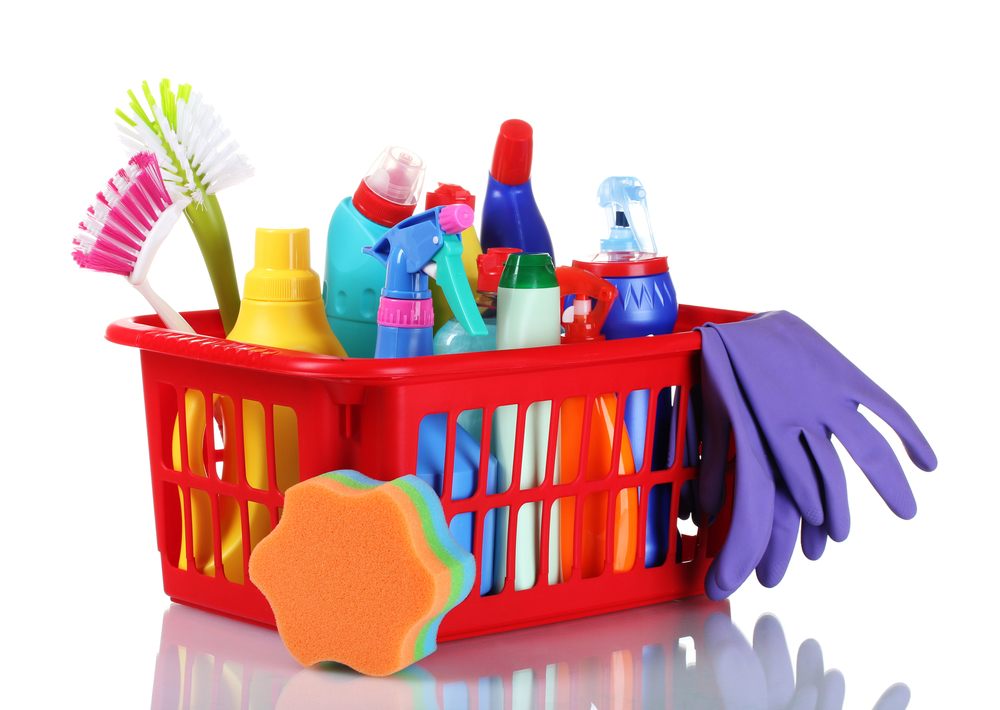
Poison control sees spike in calls for cleaner, disinfectant accidents amid COVID-19 pandemic
Calls related to cleaner and disinfectant exposure are up 20% compared with calls last year.

Calls to poison control centers regarding exposure to household cleaners and disinfectants have spiked amid the COVID-19 pandemic, according to a new report.
The report authors found that, from January to March this year, poison control centers received 45,550 calls related to cleaner and disinfectant exposure. That's up 20% compared with calls over the same period in 2019, according to the report, from the Centers for Disease Control and Prevention.
The report cannot prove for certain that the rise is due to people's cleaning efforts to prevent COVID-19, but it does show "a clear temporal association with increased use of these products," the authors said.
Overall, calls for exposures to bleach, non-alcohol disinfectants and hand sanitizers made up the biggest percentage of the increase from 2019 to 2020, the report found.
The authors also highlighted two cases that were particularly illustrative of the types of calls poison control is receiving.
—Coronavirus in the US: Map & cases
—What are coronavirus symptoms?
—How deadly is the new coronavirus?
—How long does coronavirus last on surfaces?
—Is there a cure for COVID-19?
—How does coronavirus compare with seasonal flu?
—How does the coronavirus spread?
—Can people spread the coronavirus after they recover?
In one recent case, a woman heard on the news that she should be washing groceries, such as produce items, before consuming them. (Despite such news coverage, food safety experts do not recommend washing produce with soap, Live Science previously reported.) The woman filled her sink with a mixture of bleach, vinegar and hot water, and placed the produce in the sink to soak, the report said. But soon afterwards, the woman noticed a noxious, "chlorine" smell. (When bleach is mixed with an acid, such as vinegar, chlorine gas is produced, Live Science previously reported.)
The woman began to experience difficulty breathing, coughing and wheezing. That's when she called 911, and doctors found she had mild hypoxemia, or low levels of oxygen in the blood. The woman was treated with oxygen and medications to help her breathing, and she was released from the hospital a few hours later.
Sign up for the Live Science daily newsletter now
Get the world’s most fascinating discoveries delivered straight to your inbox.
In another case, a preschooler was found unresponsive after ingesting an unknown quantity of hand sanitizer from a 64-ounce bottle. The child vomited on the way to the emergency room; doctors found the child had a blood alcohol level of 273 milligrams per deciliter (mg/dL), much higher than the legal limit for driving a car, which is 80 mg/dL in most states. The child was admitted to the pediatric intensive care unit, but soon improved and was released after 48 hours.
To prevent dangerous exposure to cleaning products, the authors recommend that users always read the follow directions on the product label, only use room-temperature water for dilution, avoid mixing chemical products, wear eye and skin protection, ensure adequate ventilation in areas where the products are used, and store the chemicals out of reach of children.
- The 12 deadliest viruses on Earth
- 20 of the worst epidemics and pandemics in history
- Going viral: 6 new findings about viruses
Originally published on Live Science.
OFFER: Save 45% on 'How It Works' 'All About Space' and 'All About History'!
For a limited time, you can take out a digital subscription to any of our best-selling science magazines for just $2.38 per month, or 45% off the standard price for the first three months.

Rachael is a Live Science contributor, and was a former channel editor and senior writer for Live Science between 2010 and 2022. She has a master's degree in journalism from New York University's Science, Health and Environmental Reporting Program. She also holds a B.S. in molecular biology and an M.S. in biology from the University of California, San Diego. Her work has appeared in Scienceline, The Washington Post and Scientific American.










